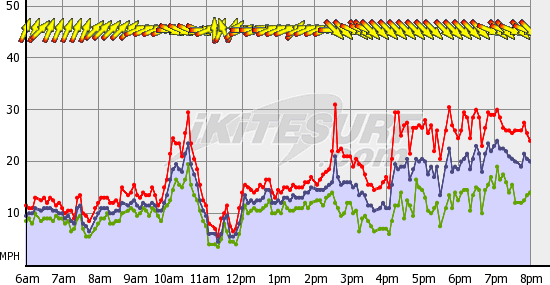
 |
|
|
|
#1
|
||||
|
||||
|
Here's a real important question. Informed input particularly from guys in the industry would be very welcome ...
Quote:
__________________
FKA, Inc. transcribed by: Rick Iossi |
|
#2
|
|||
|
|||
|
We had a day like that here (Clearwater) yesterday also. 6 or 7 of us off south end of Honeymoon Island riding on 12s and 14s. Big black death band appeared from the west. We all scrambled to the beach and put the kites down. Then made the "uncool" but very smart move to deflate the leading edges and roll them up just as we got them rolled up and to the otherside of the dune it nuked. Waited 20 min and pumped em back up and rode again for the rest of the day.
It was a good feeling to do the right thing and play it safe. It did not go unnoticed by the Rangers in the park that we got off the water as a group, and acted responseably. When you see anything that resembles a change in the sky that is the time to move your leash connection point not when your hanging from the bar. Most were struggling to stay up wind prior to the cell coming in, on big kites and big boards, but even with the wind at 10 to 12 on a glide I took the time to slow down sink out and move my lease from the chicken loop line to the union of the front two lines just incase I did'nt make it to the beach before the squall hit. I don't know how to post the ikite wind picture for yesterday at Dunedin Causeway but if you look you can see this event at 2:30 it goes from 12mph to 30+. Be safe, don't get lulled into thinking that just because it has not happend to you, it can't. It will, it is important to learn from the mistakes of others with out having to experience the mistakes yourself. I was very proud of all the guys I was riding with yesterday to follow the lead and get off the water instead of staying out for a few more tacks and showing how high they could jump to the guys on the beach who had set their kites down first. It's ok to be the first one to go in when you see the potential for pain. It's the best thing you can do for your buddies. I was guilty of going in and getting a smaller board to go back out for a few more runs in good wind and nice waves, but as I headed back out into the water, I looked at the sky and managed to stop myself and say "no I'm smarter than this" and turned around and landed. |
|
#3
|
|||
|
|||
|
Rick, Like you said every kite is different. I know that on a SB3 if you put your leash on the triangle shaped ring that connects the front two lines to the chicken loop main line and depower straps, when let onto the leash the kite will act like it does in Jon Modica's video of self landing a swithblade III. Much better alternitive to the back line ring the factory provides on the outside of the bar. Letting the kite go onto that point results in a big mess of spaghetti and a kite that you can not relaunch.
Last edited by Whitey; 02-14-2008 at 08:16 AM. Reason: can't spell |
|
#4
|
||||
|
||||
|
Thanks for your input Whitey. When it comes to squalls, earlier is far better than later. So many guys just waited too long and then their options vanish. It is a good thing to well secure on the beach before things hit too. Runaway kites can easily mess themselves up and occasionally folks downwind.
Here is the ikitesurf image you mentioned for Dunedin for 2.13.08. The first spike looks like a squall with the confused wind direction changes. Note the violent direction changes happened after the spike. There is no telling what a squall will do, mega-spike the winds, kill them, change direction or do little. You only know once it is on you. The second from the direction and spike change looks like the passage of a frontal boundary and squall line. 
__________________
FKA, Inc. transcribed by: Rick Iossi |
 |
|
|